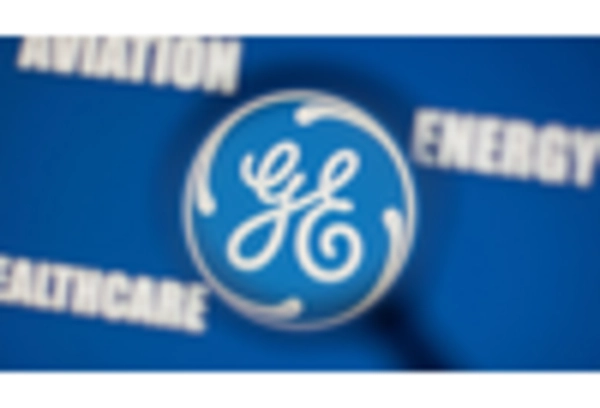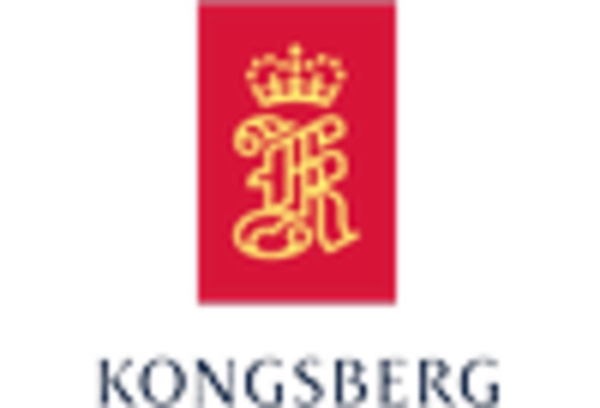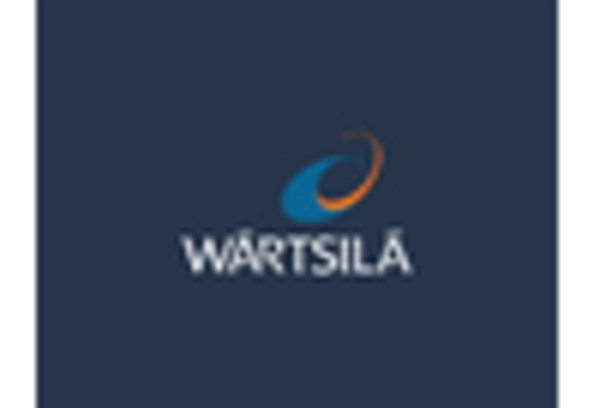Rising Fuel Costs
The Hybrid And Full Electric Marine Propulsion Market is significantly influenced by the rising costs of traditional marine fuels. As fuel prices continue to escalate, operators are increasingly seeking alternative propulsion systems that can mitigate these expenses. Hybrid and full electric systems offer the potential for reduced fuel consumption and lower operational costs. According to recent data, vessels equipped with hybrid propulsion can achieve fuel savings of up to 30% compared to conventional systems. This economic incentive is compelling for shipowners, particularly in a competitive market where operational efficiency is paramount. Consequently, the shift towards hybrid and full electric propulsion is likely to accelerate as stakeholders aim to enhance profitability while adhering to environmental standards.
Investment in Research and Development
Investment in research and development is a crucial driver for the Hybrid And Full Electric Marine Propulsion Market. As the marine sector seeks to innovate and improve propulsion technologies, significant funding is being directed towards R&D initiatives. This investment is aimed at enhancing the performance, efficiency, and reliability of hybrid and full electric systems. Collaborations between academia, industry players, and government entities are fostering an environment conducive to technological breakthroughs. The focus on developing advanced materials, energy management systems, and integration of renewable energy sources is expected to yield substantial advancements in propulsion technologies. As these innovations emerge, they are likely to further stimulate the Hybrid And Full Electric Marine Propulsion Market, creating new opportunities for growth and development.
Regulatory Support for Emission Reduction
The Hybrid And Full Electric Marine Propulsion Market is experiencing a surge in regulatory support aimed at reducing emissions from marine vessels. Governments are implementing stringent regulations that mandate lower emissions and promote cleaner technologies. For instance, the International Maritime Organization has set ambitious targets for reducing greenhouse gas emissions from shipping. This regulatory landscape encourages shipbuilders and operators to invest in hybrid and full electric propulsion systems, which are perceived as viable solutions to meet these requirements. As a result, the market is likely to witness increased adoption of these technologies, driven by compliance needs and potential financial incentives offered by governments. The growing emphasis on sustainability is expected to further propel the Hybrid And Full Electric Marine Propulsion Market, as stakeholders seek to align with environmental goals.
Technological Innovations in Energy Storage
Technological advancements in energy storage solutions are playing a pivotal role in the Hybrid And Full Electric Marine Propulsion Market. Innovations such as lithium-ion batteries and fuel cells are enhancing the efficiency and reliability of electric propulsion systems. These advancements enable vessels to operate for extended periods without the need for frequent recharging, thereby increasing their operational range. Furthermore, improvements in battery technology are leading to lighter and more compact energy storage systems, which are crucial for marine applications. As these technologies continue to evolve, they are expected to drive the adoption of hybrid and full electric systems, making them more attractive to shipbuilders and operators. The ongoing research and development in this field suggest a promising future for the Hybrid And Full Electric Marine Propulsion Market.
Growing Demand for Sustainable Shipping Solutions
The Hybrid And Full Electric Marine Propulsion Market is witnessing a growing demand for sustainable shipping solutions. As environmental awareness increases among consumers and businesses, there is a heightened focus on reducing the carbon footprint of maritime operations. This trend is prompting shipping companies to explore hybrid and full electric propulsion options as part of their sustainability strategies. The market for electric and hybrid vessels is projected to expand significantly, with estimates suggesting a compound annual growth rate of over 20% in the coming years. This demand is driven not only by regulatory pressures but also by the desire of companies to enhance their brand image and appeal to environmentally conscious customers. Thus, the shift towards sustainable practices is likely to be a key driver for the Hybrid And Full Electric Marine Propulsion Market.


















Leave a Comment